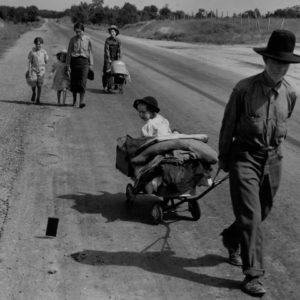Causes of The Great Depression Reconsidered

On Mar. 28, I reported that conventional wisdom has it that there were five causes of The Great Depression.
- Credit-fueled Consumption: Consumers buying things they can’t afford with borrowed money.
- Financial Speculation: Investors (and especially institutional investors) trading stocks “on margin” (i.e., leveraged with credit).
- The Smoot-Hawley Act of 1930: Intended to protect the interests of US farmers, it raised import duties by about 20%. When foreign countries retaliated with their own tariffs, trade dropped by 65%. US exports fell from $7 billion in 1929 to $2.5 billion in 1932.
- The Federal Reserve: In 1929, to counter inflation, the Fed hiked up its lending rate. This made it difficult for many businesses to pay their existing debts and borrow new money, forcing many of them to close their doors.
- The Gold Standard: Today, when the government wants to stimulate the economy, it lowers the Fed interest rate. When the cost of borrowing money goes down, businesses are incentivized to borrow and invest. In 1929, the government couldn’t do that because – like many other countries at the time – the US was on the gold standard. The gold standard was basically a law that limited the printing of dollars to the amount of real wealth (i.e., gold) that the government owned. Thus, the lending rate hike, mentioned above, was not optional. It was mandated by law.
What I didn’t have time to point out when I touched on this last week was this:
The first two causes are legit. Debt and speculation are and always have been the root causes of every great depression in economic history.
But including the gold standard and the Fed’s rate hike as causes is retroactive academic bullshit, designed to justify the crazy system we have now. Pegging a country’s currency to a limited asset, like gold, is the best and perhaps the only way to prevent the government from printing more money than it can afford to spend. A gold standard is an iron-clad way to prevent inflation and hyperinflation.
The Fed back then had to raise its interest rates. And it should have done so. It contributed to a panic, but the US might never have recovered from The Great Depression without it.
As for the Smoot-Hawley Act: It’s disingenuous to list it as a cause of The Great Depression. It certainly didn’t improve the economy. But it was not an underlying cause.
Trade wars, like all wars, are economically and socially costly. The idea of “protecting” domestic industries from the lower prices of foreign competition through high import duties is a demonstrably bad idea. It is true that if you measure the effect of tariffs narrowly, from the perspective of the protected group, they seem to work. The protected group prospers. But if you measure it holistically – the effect on the entire economy – they are, at best, a breakeven.
The Smoot-Hawley Act didn’t work in 1930, just as Trump’s tariff battle with China didn’t work during his term. The concept is specious and morally corrupt. It’s a political stunt that populist politicians use to pander to their voting bases. And since politics is about power and not sound economics, it will probably be part of American politics forever.
 MarkFord
MarkFord





